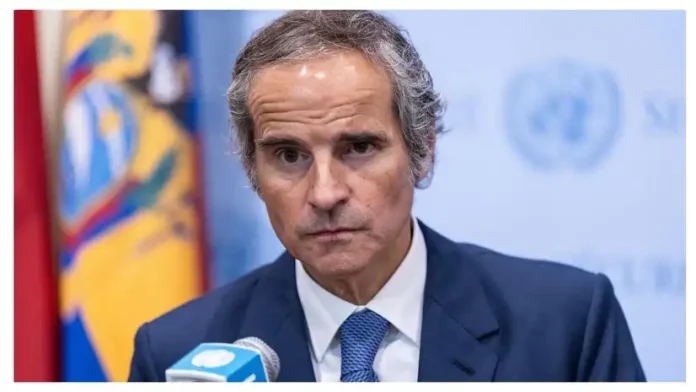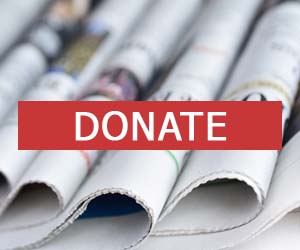– Mohammed Talha Siddi Bapa
As the dust settles over Iran’s bombed nuclear facilities, a profound and unsettling question lingers: Can diplomacy survive when its infrastructure is reduced to rubble?
In an interview that garnered global attention, International Atomic Energy Agency (IAEA) Director General Rafael Grossi confirmed what many had feared – the recent strikes on Iran’s nuclear sites at Fordow, Natanz, and Isfahan caused “very serious” and “significant” damage. Yet, beneath this sobering admission lay a message far more critical: Iran’s nuclear capabilities, though impaired, are not extinguished. Its technical infrastructure and institutional expertise remain intact – a dormant fire under debris.
The strikes, primarily carried out by Israel and supported by U.S. military assets, including American B-2 stealth bombers (CBS News, June 26, 2025), were aimed at halting Iran’s uranium enrichment programme. But these facilities were not hidden bunkers of a rogue operation. They were declared sites, under the ongoing IAEA oversight, operating within the framework of a globally accepted, if fragile, non-proliferation regime. That very regime now stands at a crossroads, threatened not just by Iranian defiance, but by the precedent set by this action.
“Our job is not to assess damage, but to re-establish knowledge,” Grossi told Face the Nation. His statement was less about nuclear physics and more a lament for diplomacy interrupted.
Indeed, therein lies the central irony: military action against a programme that was being monitored by the world’s foremost nuclear watchdog, followed by renewed calls from the same actors for diplomatic engagement and verification. What message does this send to nations that comply with international safeguards? That even transparency offers no protection from pre-emptive force?
Iran’s reaction has been swift and defiant. Parliament passed a law suspending cooperation with the IAEA. Foreign Minister Abbas Araqchi dismissed Grossi’s request to revisit the damaged facilities as “hostile.” In Tehran’s eyes, diplomacy has been weaponised – first exploited to map out targets, then discarded.
Western powers, particularly in Europe, have called on Iran to re-engage in talks. President Trump, while touting the success of the strikes, now urges Tehran to return to negotiations. Grossi, ever the diplomat, supports these efforts and has written to Iranian officials requesting a phased return of inspectors.
But trust, once fractured, is not easily reassembled. The images of flattened centrifuge halls will not fade quickly from Iranian memory. Nor will the suspicion that the rules of international conduct are being rewritten – not by historically non-aligned states, but by those who once championed them.
The United States and its allies argue that the strikes were necessary to prevent Iran from crossing a nuclear threshold. Yet even Pentagon officials admit the setback to Iran’s enrichment timeline may last only months – perhaps two years at most. Meanwhile, over 400 kilograms of 60% enriched uranium, some possibly relocated prior to the attacks, remains unaccounted for. The strategic gain appears temporary; the diplomatic damage, perhaps lasting.
Notably, no spike in radiation has been detected at any of the bombed sites – a fact that invites deeper scrutiny. While this may appear reassuring, it actually raises more strategic questions. It could mean that the centrifuges – central to the enrichment process – were never struck at all, or that they had been relocated well before the missiles landed. This would align with the Pentagon and IAEA’s assessment: that while infrastructure has suffered significant damage, Iran’s nuclear capability – the core machinery and scientific expertise – remains largely intact. In either case, the absence of radiation lends weight to the argument that the strike inflicted symbolic disruption more than it dismantled a programme.
Despite President Trump’s triumphant claims of having “totally destroyed” Iran’s nuclear programme, the facts suggest otherwise. The absence of any radiation spike at the bombed sites suggests that either the centrifuges had been relocated well before the strikes or that no nuclear material was present during the attack. This aligns with Pentagon and IAEA assessments: the infrastructure may be damaged, but Iran’s core nuclear capability – in terms of both hardware and scientific know-how – remains largely untouched.
This detail, though subtle, undercuts the political bravado. It supports the IAEA and Pentagon’s shared assessment: the strikes may have dealt a heavy blow to Iran’s industrial infrastructure, but its nuclear capability – both in terms of hardware and human capital – remains largely intact. In this light, Trump’s assertion reads more like rhetorical flourish than verified outcome – a declaration designed for headlines, not technical accuracy.
Israel, for its part, has celebrated the operation as a milestone in national security. But security purchased at the expense of international norms is not without cost. The IAEA’s role as a neutral arbiter is under strain. If its inspections can be overtaken by bombs, its authority eroded by states acting unilaterally, what remains of the non-proliferation order?
In this context, Grossi’s quiet warning carries weight. He is not merely asking for access to inspect damage; he is pleading for the survival of a system that seeks to balance sovereign rights, global stability, and nuclear restraint. His call is not just to Iran, but to the world: diplomacy is not a switch to be flipped on and off between airstrikes.
If the so-called “civilized world” believes in dialogue, it must also believe in its infrastructure – institutions, treaties, inspections – and protect them as vigilantly as it defends borders. Otherwise, we risk normalising a world where diplomacy begins only after destruction.




